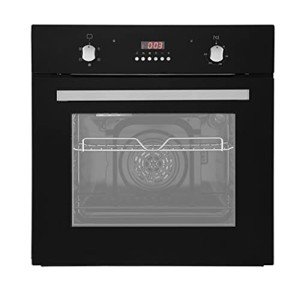The Comprehensive Guide to Built-in Ovens: Features, Benefits, and FAQs
Built-in ovens have ended up being a staple in modern kitchen areas, offering convenience, design, and effectiveness. Unlike standard freestanding ovens, built-in models are designed to incorporate seamlessly into cabinetry, thereby elevating both the function and aesthetics of kitchen areas. This article delves deep into the world of built-in ovens, discussing their features, benefits, setup considerations, and answers to frequently asked questions.
What is a Built-in Oven?
A built-in oven is a device that is developed to be installed straight into a wall or kitchen cabinetry. integrated gas oven and hob packages offers property owners the ability to create a tailored cooking area, taking full advantage of readily available kitchen square footage while providing a smooth, expert look.
Secret Features of Built-in Ovens
Built-in ovens are loaded with features that deal with a range of cooking designs and choices. Secret features include:
| Feature | Description |
|---|---|
| Variety of Cooking Modes | Alternatives such as convection baking, broiling, and self-cleaning modes to boost culinary adaptability. |
| Size and Configuration | Available in numerous sizes and heights to fit particular kitchen designs, ranging from compact to bigger systems. |
| Style Options | Visual choices including stainless steel, black stainless, and custom-made panels to match any kitchen decor. |
| Smart Technology | Lots of built-in ovens come equipped with Wi-Fi capabilities, making it possible for remote tracking and control through mobile phone apps. |
| Multi-Functionality | Some designs combine oven and microwave or consist of steam functions to create diverse cooking alternatives. |
Advantages of Built-in Ovens
The advantages of including a built-in oven into a kitchen style extend beyond simple visual appeals. Here are some noteworthy advantages:
1. Area Efficiency
Built-in ovens maximize countertop space by getting rid of the requirement for a freestanding system. Their integration into cabinets enables for a cleaner kitchen layout.
2. Boosted Visual Appeal
With smooth styles and customizable finishes, built-in ovens boost the general look of the kitchen, adding to a more cohesive design.
3. Improved Cooking Performance
Numerous built-in designs use innovative cooking technologies, such as convection cooking, which circulates hot air for even cooking, decreasing cooking times and enhancing outcomes.
4. Convenience and Accessibility
Built-in ovens are frequently positioned at eye level, making it simpler to look at cooking progress, reducing the need to flex down, and improving safety.
5. Increased Home Value
A well-designed kitchen with built-in appliances can substantially increase a home's worth, making it more attractive to prospective purchasers.
Installation Considerations
When picking and installing a built-in oven, there are several elements to think about:
- Kitchen Layout: It's necessary to prepare how the oven will fit into the existing area, including cabinet heights and clearance requirements.
- Electrical and Ventilation Needs: Built-in ovens typically require particular electrical setups; ensure that the kitchen abides by local electrical regulations.
- Expert Installation: Due to the complexity of installation, working with a specialist can make sure that the oven is set up securely and correctly.
Kinds Of Built-in Ovens
Built-in ovens can be found in various types, each fit for various cooking styles. Below are some of the most common:
- Single Oven: A standard option for everyday cooking needs, offering flexibility for baking, roasting, and broiling.
- Double Oven: Offers two separate cooking compartments, permitting synchronised preparation of multiple meals-- a favorite for large households and those who amuse frequently.
- Wall Oven: These ovens are fully integrated into the wall and be available in different designs, including steam ovens and combination microwave ovens.
Popular Brands of Built-in Ovens
A number of trustworthy brands provide premium built-in ovens, known for their reliability and range of features:
- Bosch: Known for smooth style and advanced cooking innovation.
- KitchenAid: Offers imaginative features and multi-functional styles.
- Samsung: Integrates wise technology with a contemporary aesthetic.
- GE Appliances: Provides a range of alternatives for numerous budgets.
Often Asked Questions (FAQs)
1. How do I select the ideal built-in oven for my kitchen?
When selecting a built-in oven, think about the size of your kitchen, your cooking style and frequency, the available budget, and any necessary electrical outlets or ventilation alternatives.
2. Are built-in ovens energy effective?
Many built-in ovens feature energy-efficient technologies, such as better insulation and accurate temperature level controls, which can cause less energy intake compared to standard ovens.
3. Can I set up a built-in oven myself?
While some property owners might attempt DIY installation, employing an expert is extremely recommended to guarantee safe and correct installation, especially concerning electrical connections.
4. What upkeep do built-in ovens require?
Regular maintenance consists of cleaning up the oven interior and exterior, examining the seals for integrity, and guaranteeing that any wise features or controls are updated as required.
5. Do built-in ovens featured service warranties?
Yes, the majority of credible brand names offer guarantees on their built-in ovens, usually covering parts and labor for a given duration. Make sure to inspect the details before purchasing.
Built-in ovens provide a blend of style, effectiveness, and functionality, making them a popular choice for both contemporary and standard cooking areas alike. With thoughtful consideration of features, setup, and upkeep, homeowners can enhance their cooking experience while including substantial value to their homes. Whether choosing a single or double oven, the investment in a built-in model assures to revolutionize the culinary landscape of any home.

